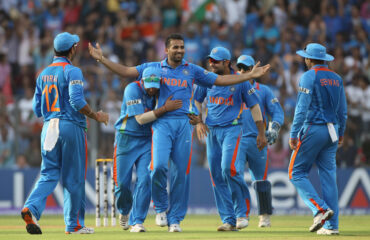In the annals of cricket history, the 1999 Cricket World Cup Semi-Final between Australia and South Africa stands as an enduring testament to the drama, intensity, and sheer unpredictability that the sport can offer. Held at Edgbaston in Birmingham on June 17, 1999, this match would etch its name in the memories of cricket enthusiasts worldwide as one of the greatest ODIs ever played.
The stage was set for a gripping encounter as two cricketing powerhouses, Australia and South Africa, clashed for a spot in the final. The match would not only produce high-quality cricket but also reach a climax that defied imagination.
Australia, batting first, posted a competitive total of 213 runs for the Proteas to chase. The innings featured a gritty century by Steve Waugh, who showcased his prowess in pressure situations. The Australian total, though modest by contemporary standards, proved to be a testing target in the pressure-cooker atmosphere of a World Cup semi-final.
South Africa’s response was led by Herschelle Gibbs, who played a crucial innings under challenging conditions. However, as tension mounted, the game took a dramatic turn in the penultimate over. With South Africa needing just one run to win, Lance Klusener smashed consecutive boundaries, setting off wild celebrations. Victory seemed certain for the Proteas, but destiny had other plans.
In an unforeseen twist, the next ball resulted in a run-out at the non-striker’s end. The scores were tied, and in a heart-wrenching moment, South Africa fell short of the required runs due to the tiebreaker rule. The match ended in a dramatic tie, leaving both teams level on runs.
What followed was a rule that sparked debates and discussions in the cricketing fraternity—the net run rate. Despite the thrilling tie, Australia advanced to the final by virtue of a superior net run rate in the Super Six stage. This rule would later be replaced by the Super Over in tie-breaker situations, but the 1999 semi-final’s impact on cricket regulations remains indelible.
The sheer rollercoaster of emotions, from Klusener’s heroics to the heartbreak of the tied result, left fans on the edge of their seats. The 1999 semi-final was not just about cricketing skills; it was about resilience, sportsmanship, and the unpredictable nature of the game.
This match went beyond the realms of sport; it became a metaphor for life’s uncertainties and the fine margins that separate triumph from heartbreak. The image of a devastated Allan Donald and a relieved Steve Waugh encapsulated the raw emotions that define the beauty of cricket.
In the aftermath of this unforgettable semi-final, the cricketing world grappled with the concept of tiebreakers and the quest for fair play. The impact of this match resonates in the evolution of cricketing rules, ensuring that subsequent generations would witness a more equitable method of determining winners in tied matches.
In conclusion, the 1999 Cricket World Cup Semi-Final between Australia and South Africa remains etched in history for its breathtaking twists, the resilience of the players, and the pivotal role it played in shaping cricketing regulations. It was a match that transcended the boundaries of sport, leaving an indelible mark on the collective memory of cricket aficionados worldwide.




